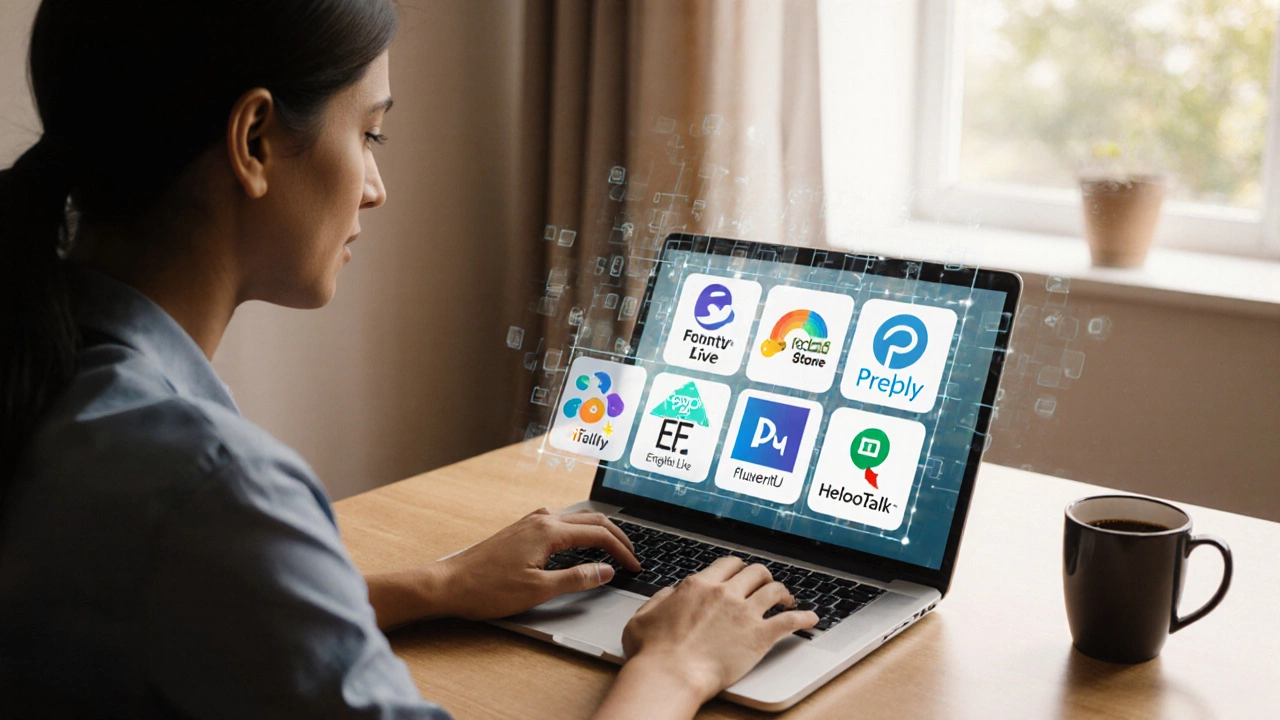Fluency Apps – Your Guide to Speaking English Confidently
When working with fluency apps, mobile tools designed to improve spoken English through interactive exercises, instant feedback, and real‑time conversation practice. Also known as speaking apps, they sit at the intersection of English fluency, the ability to communicate clearly and naturally in English, language learning apps, software that teaches vocabulary, grammar, and pronunciation, and self‑study techniques, independent learning methods such as spaced repetition and recorded speaking drills. Together they create a focused environment for everyday practice.
Why Choose Fluency Apps?
Pronouncing words correctly, forming sentences on the fly, and understanding native speakers are skills that open doors in education and work. Fluency apps make those skills reachable by providing bite‑size practice that fits into a coffee break. The relationship is clear: English fluency influences career growth, and fluency apps enable daily speaking practice. When you speak more often, confidence rises, and the language stops feeling foreign. That cause‑effect chain is why millions turn to digital tools instead of waiting for classroom time.
Not all apps are created equal. The most effective ones leverage speech recognition technology, software that analyzes your voice and scores pronunciation accuracy to give instant correction. They also pair you with virtual conversation partners, so you hear natural rhythms and respond in real time. Gamified lessons turn repetition into a game, rewarding streaks and making progress visible. These features together form a feedback loop: you speak, the app evaluates, you adjust, and you improve.
Choosing the right app boils down to four practical criteria. First, cost – free versions are fine for casual use, but premium plans often unlock AI tutors and detailed analytics. Second, offline access – a good app lets you download lessons for travel or low‑bandwidth situations. Third, personalization – algorithms that adapt to your weak spots keep you from wasting time on what you already know. Fourth, community – forums or live tutoring options add a human touch that pure software can’t replicate.
Even the best app needs a solid study habit. Pair the app with a daily 10‑minute recording routine: speak on a prompt, listen back, and note mismatches. Use spaced‑repetition flashcards for new vocabulary, then immediately test those words in a speaking exercise. Balance passive listening with active production; the more you force yourself to articulate thoughts, the faster neural pathways strengthen. This combined approach turns a simple tool into a powerful language‑learning system.
Below you’ll find a curated set of articles that dive deeper into each of these points. We’ve collected reviews of the leading fluency apps, step‑by‑step guides for building a self‑study schedule, and expert tips on getting the most out of speech‑recognition feedback. Whether you’re a beginner looking for a first‑step app or an advanced speaker fine‑tuning your accent, the posts ahead provide concrete actions you can start using today.
Best Platforms to Speak English Fluently - 2025 Guide
Discover the top English speaking platforms of 2025, compare features, pricing, and learn how to choose the best one for fluency.
read more